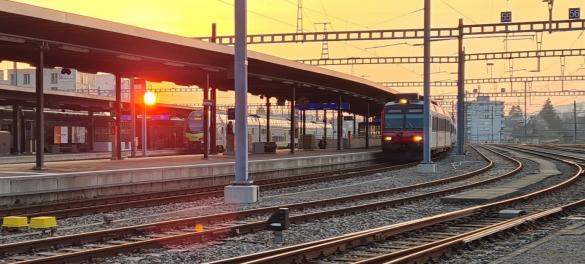CLUG collects data “Around the World”
Siemens and its partners are performing data collection on three different trains in Switzerland, France and Germany. All this data will then be used to test the localisation algorithms designed in the framework of the project in order to gather as much as possible experience and knowledge about the behaviour of these sensors and their associated fusion algorithms in railway environment.
Collecting data in different environments and under different operating conditions
SBB, SNCF and DB are providing three different trains within the CLUG project to perform data collection, in order to cover as many different environments and operational scenarios as possible.
While the trains from SNCF and DB are dedicated to tests, and belong to the respective infrastructure organisations, the train provided by SBB is a regional train which is owned by SBBs passenger division and operated in commercial service.
This train has been selected to collect large amounts of data across many different lines and in typical, daily operations, which cannot be done with trains which are only used for dedicated test runs.
Installation of equipment
A Domino regional train has been selected to perform data collection in Switzerland. One of the key arguments for that train type was the availability of a baggage compartment, which is not used anymore operationally, providing ample space. Having a separated compartment also makes it possible to perform attended data collection during commercial operation, without interfering with passengers or the driver.
SBB and Siemens have then jointly equipped the train with the required antennas, sensors and data recording equipment as specified by the CLUG project.
Collecting vast amounts of data
The Domino train is being operated as part of a larger fleet, rotating between different services. This kind of operation result in a data collection over different parts of the Swiss railway network with its diverse environments. Data will also be collected multiple times on most lines under different operational, meteorological and GNSS constellation conditions.
Collecting data every day however requires that the data collection, handling, processing and analysis is highly automated, as large amounts of data need to be processed.
From the start of the data collection in the frame of the CLUG project in November 2020 until the end of May 2021, data has already been collected over nearly 2’000 hours and 45’000 km, a distance of more than once Around the World.
To collect data under conditions which typically don’t happen in regular service, and on lines where a regional train typically does not operate, dedicated measurement campaigns are also being performed with the Domino train on a regular basis. During these campaigns, tests are being performed to explore the limits of operational scenarios, as well as of the sensors under investigation.
Handling and processing of the recorded data
Siemens has developed a set of tools which automatically perform data post processing once newly recorded data has been collected from the train. Processed raw data is then shared in an agreed and harmonised format with the partners for further analysis, using a cloud provided by SNCF. Data from the French and German test trains is also shared via this cloud. A representative amount of that data will also be shared with other partners, towards the end of the CLUG project, to benefit to the entire rail sector.
Next steps
The shared raw data will then be processed in two separate test environments, developed by Siemens and Naventik, using sensor fusion algorithms developed by Airbus and Naventik. This step emulates possible positioning solutions based on the two types of fusion algorithms, generating position and velocity information as if these systems would have been installed onboard the train during the raw data collection. Performing this sensor fusion offline however makes it possible to “re-run” the same journey again and again, using improved versions of fusion algorithms.
The output of these test systems will then be analysed using a data analysis tool developed by Siemens. This tool generates a set of performance data, graphical plots and statistics, in which areas with anomalies or poor performance are highlighted, avoiding the need to manually search such areas across the many datasets.
These two steps will also be highly automated, making it possible to quickly and efficiently process large amounts of data even repeatedly, using different fusion algorithms.
Last but not least the CLUG partners will jointly interpret the outputs of the data analysis tool, in order to identify areas where the fusion algorithms can be improved. This last step will have to be performed “manually” in the frame of a number of workshops which will start during the summer, once the fusion algorithms and the analysis tool of Siemens will be finalised.The CLUG project team is looking forward to enter this last and very important step. We believe that all the data that has been collected, all the shared knowledge and experience will allow us to change the railway environment for better and forever.
Bernhard Stamm, Senior ERTMS Expert,Siemens







